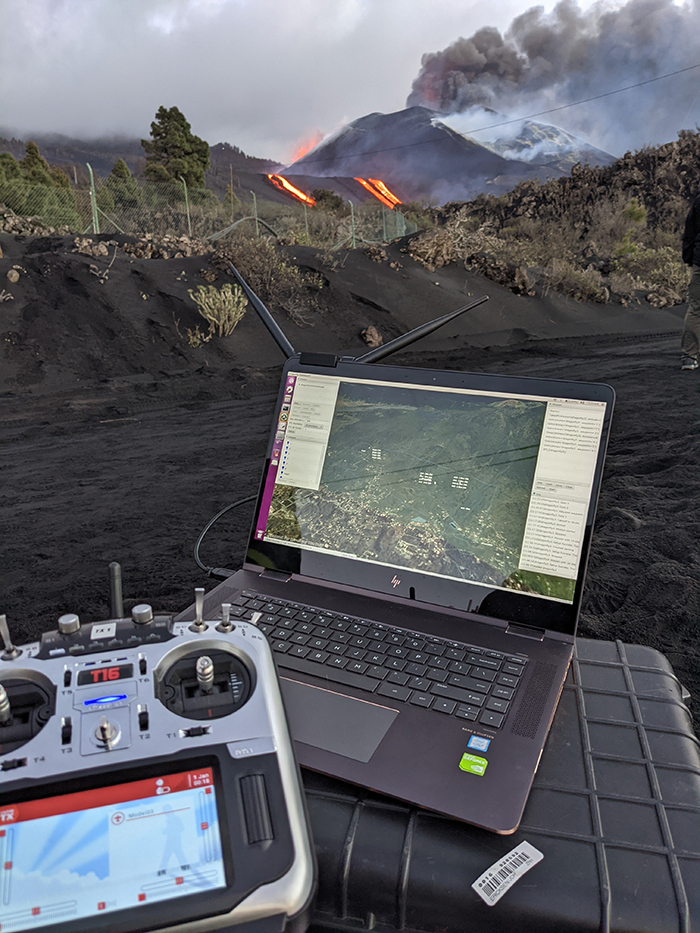
An interdisciplinary research team from the University of New Mexico (UNM) has become one of the first in the world to sample uncontaminated gases from an active volcanic eruption. The data – a treasure trove that can help to predict when a volcano will erupt – were collected during the recent spewing of the Cumbre Vieja volcano at La Palma in Spain’s Canary Islands.
You can tell a lot from the composition of the gases coming from active volcanoes about what is happening deep beneath. And yet, gathering this critical data can be extremely hazardous to volcanologists. This is why the National Science Foundation awarded UNM with a four-year, $1.5 million grant in 2020 to develop novel, bio-inspired software and drones to measure and sample volcanic gases.
And just one year later, the Project VolCAN team found itself navigating multiple physical and bureaucratic hoops to fly a drone into the erupting Cumbre Vieja volcano at the La Palma Island, with vigor.
“We got uncontaminated gas samples from the plume that told us where the magma causing the eruption was coming from. No one has ever been able to do that during an eruption before,” explains an ecstatic Matthew Fricke, one of the principal investigators on the VolCAN project and a research assistant professor of computer science. “That data allows us to try and forecast the duration and intensity of the eruption.”
Also read: Dog owner spends nearly $16K on drones to celebrate pooch’s birthday

The eruption, which began in September 2021 and ended in late December, is the largest in Europe in 500 years. Since the fall, volcanic lava flows from Cumbre Vieja have destroyed more than 1,000 homes and covered significant parts of the western side of the island with ash.
The dramatic and devastating occurrence made for a rare and perfect opportunity for the VolCAN team to put its resources to the test. And while the team members may have had to protect themselves from noxious gases by donning military-grade gas masks this time, the ultimate goal is to write code that would allow drone swarms to autonomously survey gases and allow small local monitoring stations to keep an eye on volcanoes.
At the La Palma mission, the team made CO2 concentration transects of the plume and obtained video footage of the eruption in addition to gas samples. The gas samples, meanwhile, were analyzed for carbon isotopes in collaboration with and using the instrumentation of the local scientists on La Palma.
The obtained data provides new insights into the nature and depth of the magma source in near real time. This information, together with other data collected by numerous scientists from local and international institutions, will result in forecasts about the ongoing and future volcanic activity.
Read more: Skydio makes a move on filmmakers with KeyFrame autonomous drone cinematography
Photos courtesy: University of New Mexico
FTC: We use income earning auto affiliate links. More.






Comments